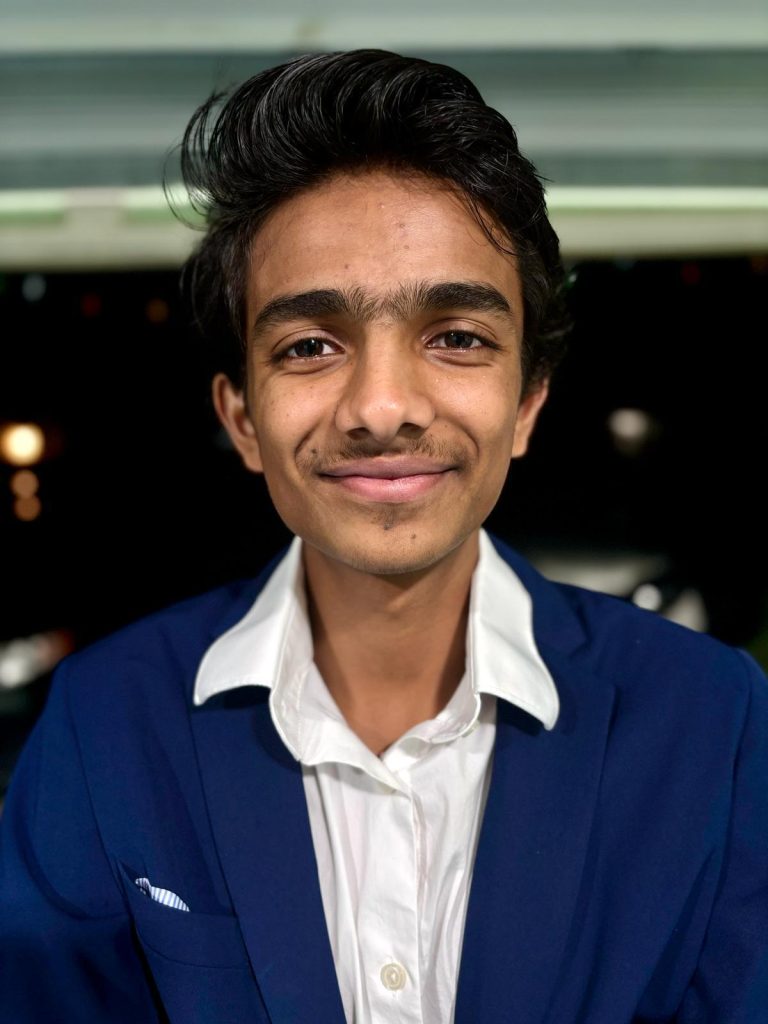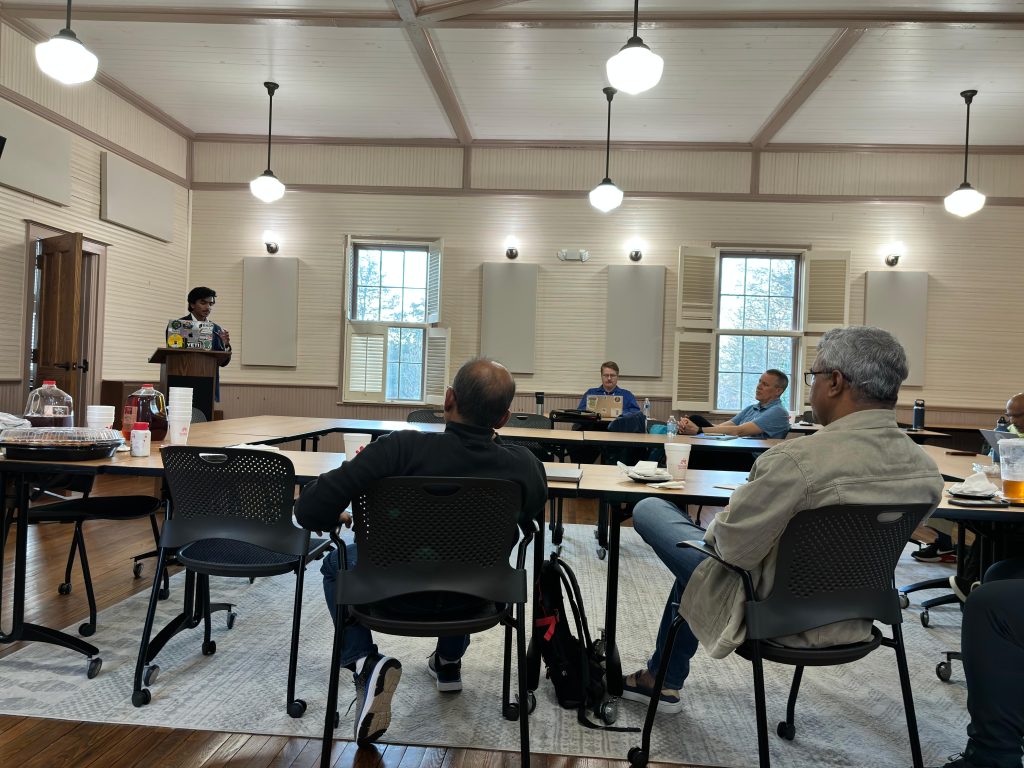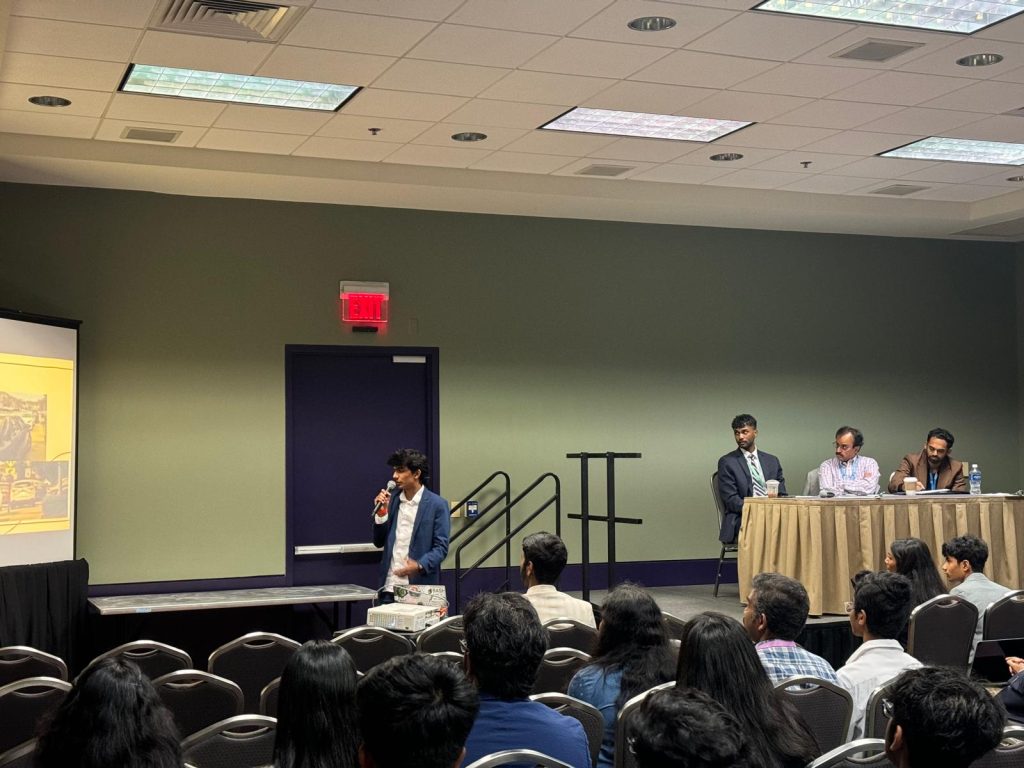(July 12, 2024) “Everything around you that you call life was made up by people that were no smarter than you, and you can change it, you can influence it, you can build your own things that other people can use.” This quote by Steve Jobs resonates the most with Indian-American teen Naren Manikandan who at the age of 16 took it upon himself to find a solution for the growing issue of a lack of parking due to smaller driveways, narrow roads, and insufficient supply to maintain the demand in his neighbourhood. “Parking is a huge problem in Birkshires in Morrisville, North Carolina and I often heard my parents discuss it at home. That’s when I realised that there are so many unused parking spaces that can be used efficiently to overcome the problem,” Naren tells Global Indian.
This led him to build Parkware, a parking solution for neighbourhoods nationwide that don’t have access to extra parking lots and face severe restrictions based on city/town regulations and home construction. “The app connects homeowners with unused parking spaces with residents needing parking spaces for local events like parties, and birthdays,” the 17-year-old reveals.

Naren Manikandan
Love for building things
Hailing from Tamil Nadu in India, his parents, who are nurse practitioners, moved to the UK where Naren Manikandan was born. At the age of six, he and his family relocated to Tennessee in the US which he called home for several years before moving to North Carolina. “Obsessed with Lego while growing up, I always found myself building things. But once an uncle of mine introduced me to Quantum Mechanics which sparked my interest in astrophysics initially and eventually transformed into a love for computer science. I was intrigued that I could do so much with a computer,” he says, adding, “I once tried to automate my blinds through my Arduino set. It was a fun project.”
Growing up, he loved creating ideas, refining them, and eventually building them. It was online resources that came to his rescue and he learnt a great deal from them. “I also joined a Robotics team in school that helped me pitch ideas to businesses and developed speaking skills as well as creative thinking. Eventually, everything led up to Parkware – an idea I was holding onto for a long time,” adds the rising 12th grader at Research Triangle High.
The journey of Parkware
He explains that in Morrisville the land is expensive, thus leading to smaller size homes with a limited parking space. “At times, we borrow parking spaces from friends but I wondered why we should restrict it to just friends. Before Covid, our community and neighbourhood hosted many events, and people would easily give their unused parking spaces to others. But Covid changed it all. We saw less sharing and fewer community events,” says Naren, who values a strong sense of community. “It greatly helps the person organising an event. For me, it’s a sort of public duty. It’s not just about providing a solution but also helping neighbourhoods support each other.”


Multiple cars parked on the sidewalk in his neighbourhood
Having seen the problem from close quarters, he knew that the neighbourhood was in dire need of a solution. It was in the summer of 2023 that Naren started working on Parkware, leveraging his programming knowledge to build the application. He began by asking neighbours on WhatsApp group chats about their parking woes and conducting surveys on parking needs. “This helped me understand the issue better and identify potential solutions. It was Airbnb’s model that rang in my head while looking at this problem – this could be an Airbnb for parking. During vacations or office hours, many parking spaces are unused, so why not divert them to people who need them during those times?” he explains. By August 2023, he had the app ready to be tested in his neighbourhood and gather some feedback. “This year we got the opportunity to present it to the local government,” shares the proud teenager.
Currently operational in his neighbourhood in Birkshires, the app is available on Android and iOS. “If you have an event coming up, you can raise a parking space request by providing details about the date, time, and number of spots required. People near the location will get a notification about the request, an can offer their free parking spaces,” explains Naren, emphasising that it’s an on-demand service. People don’t need to list their parking spaces on the app; instead, they receive notifications through an event link shared by the event organiser. “You don’t necessarily need to install the app. You can visit our website to create a link, and share it with your neighbourhood through WhatsApp or Facebook, which is later updated on the provider’s end.”
During this over-a-year-long journey, Naren had his moments of self-doubt and was constantly distracted by new ideas. “Being persistent was one of the biggest challenges. You can explore new things but it’s equally important to stay focussed on something you are truly passionate about until you see some results.” It was a sense of duty that kept Naren pushing forward because he knew the problem still existed. “There was a purpose driving me. I knew I could make an impact since it’s an issue in my neighbourhood.”


Naren Manikandan pitching Parkware to the Morrisville Smart City committee
Future plans
Ask him about the revenue model, and the teen is in two minds. “We could either adopt a commission-based business model where the organiser pays the provide for the parking spot, and we take a commission. Or we could position this as a community service project to help neighbourhoods, with the potential of local government involvement later on.”
Naren plans to expand Parkware to cities and towns across the US facing parking problems. “As a community-based project, we can propose Parkware as a solution to local governments in cities with parking issues and potentially integrate it with any existing apps. Moreover, we can target committees and city planners looking for solutions,” says Naren, who envisions the app being used beyond neighbourhood parking for events like sports games. “Often sports stadiums have expensive parking fees but nearby neighbourhoods have open spaces that could be used for overflow parking.” Expanding to India is on his agenda, with modifications tailored to local needs. “I have a lot of connections in India, plus I visit it a lot.”


Naren presenting at the Emerge Conference after receiving 1st place in the Thinkubators competition
With his eyes set on a major in computer science, Naren wants to continue building projects. Taking inspiration from the biographies he reads, he has realised “whether its apps or inventions or innovations, they are done by people who are exactly like you. Everyone starts from basics and nothing is unreachable. You can make a difference.”
The teen, who practices Kalaripayattu, an Indian martial art, and also plays basketball, advices youngsters to stay focussed. “It’s not a straight path, and don’t expect it to be. But if you stay consistent you will get somewhere. Don’t just keep looking at the results but also look at your progress. If you have a good purpose, keep going,” he signs off.
- Follow Naren Manikandan on LinkedIn




